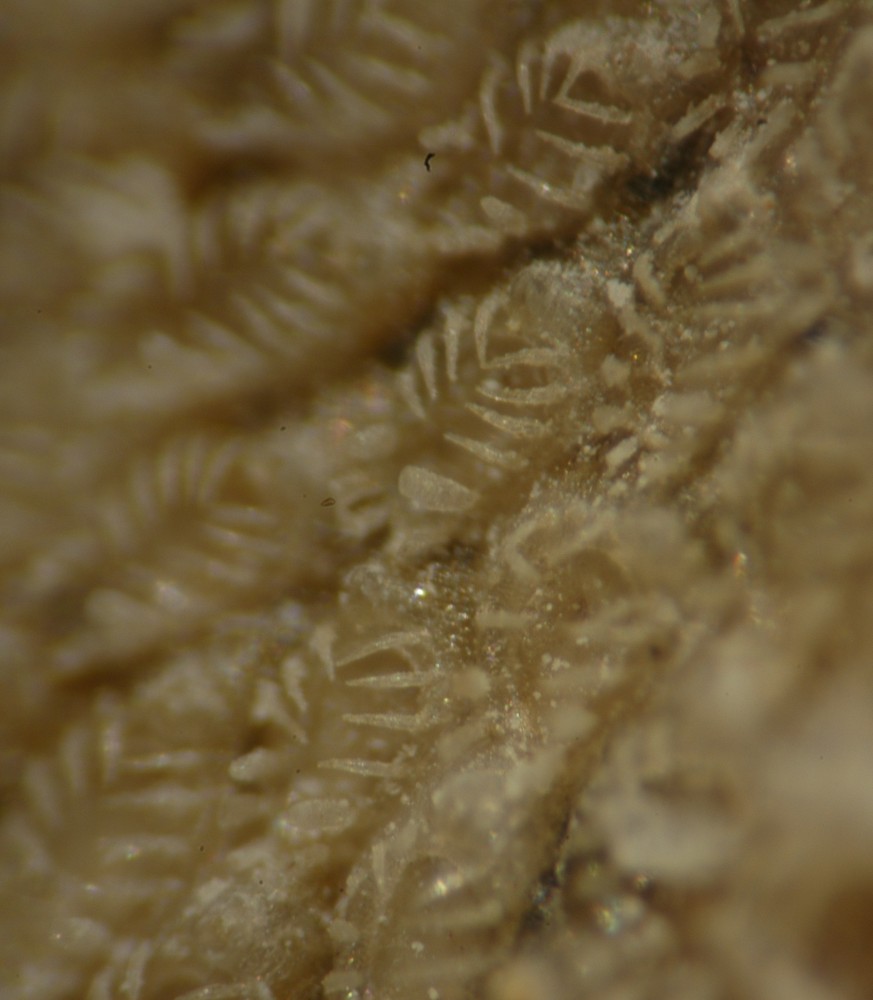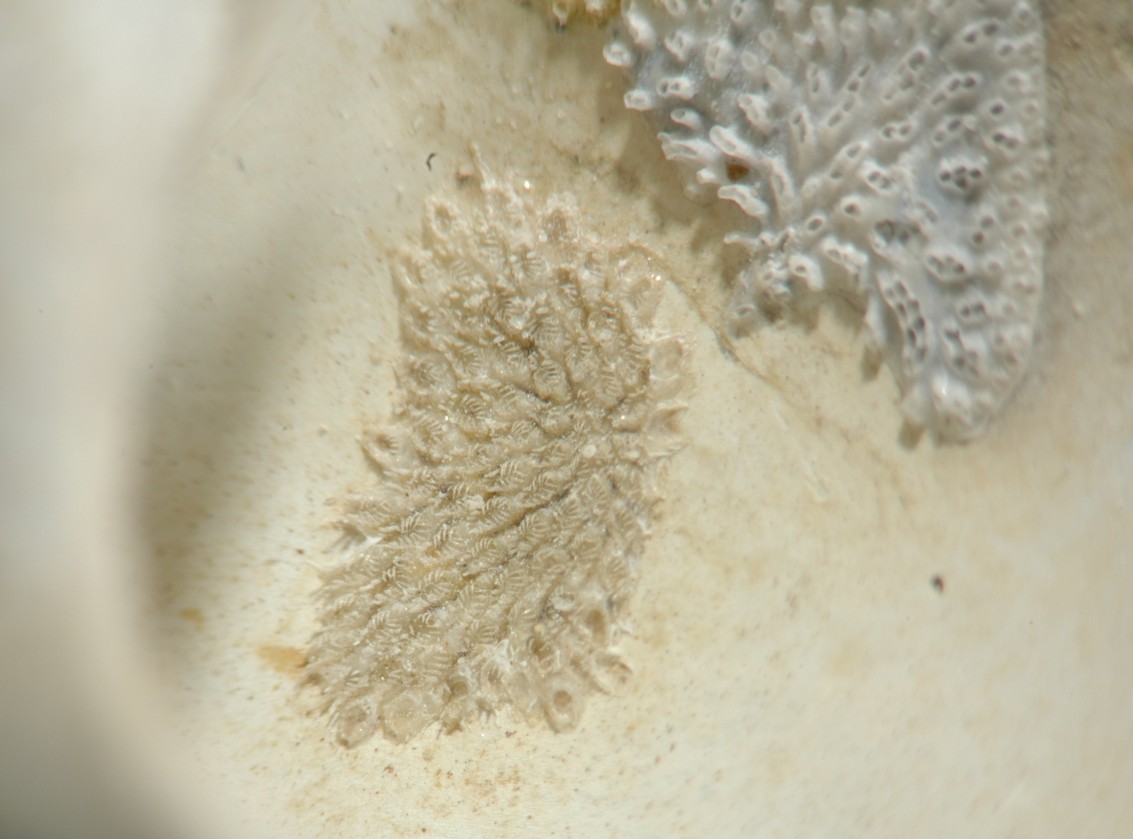How to Distinguish from Similar Species: Cauloramphus brunea and C. echinus have large grooves between the zooids.
Geographical Range:
Depth Range:
Habitat:
Biology/Natural History:
| Return to: | |||
| Main Page | Alphabetic Index | Systematic Index | Glossary |
References:
Dichotomous Keys:Kozloff 1987, 1996
Smith and Carlton, 1975
General References:
Scientific
Articles:
Wollacott, Robet M. and
Wheeler J. North, 1971. Bryozoans of California and northern
Mexico kelp beds. pp. 455-479 in North, Wheeler J. (ed.), The
Biology of Giant Kelp Beds (Macrocystis)
in California.
Beihefts zur Nova Hedwigia Heft 32. Publisher: J.
Cramer, Lehre, Germany.
Web sites:
General Notes and Observations: Locations, abundances, unusual behaviors:

This closeup shows the individual zooids.
Note that the frontal area of the zooids
is soft and membranous but it is protected by a sheath of spines around
the margin.
Here and there among the spines are thicker, stalked clublike
avicularia.
There are no large grooves between the zooids.

Here is a full view of the moon snail shell, which has a
diameter of
2.6 cm in this view.
Cauloramphus spiniferum is the bryozoan
colony farthest inside
the shell mouth (the topmost colony in this view).
The other two colonies are Lichenopora verrucaria
(middle left)
and Lichenopora novae-zelandiae (bottom right).
Authors and Editors of Page:
Dave Cowles (2007): Created original page
CSS coding for page developed by Jonathan Cowles (2007)
